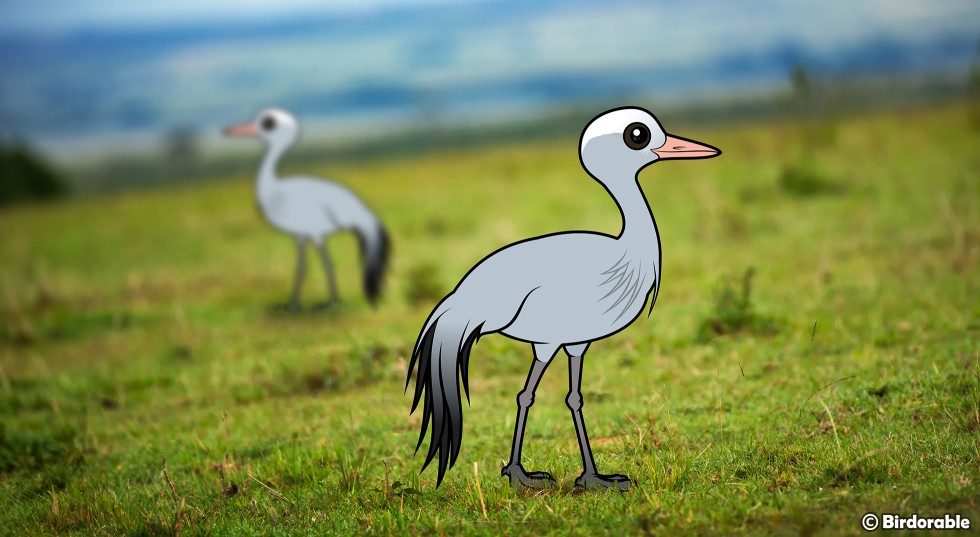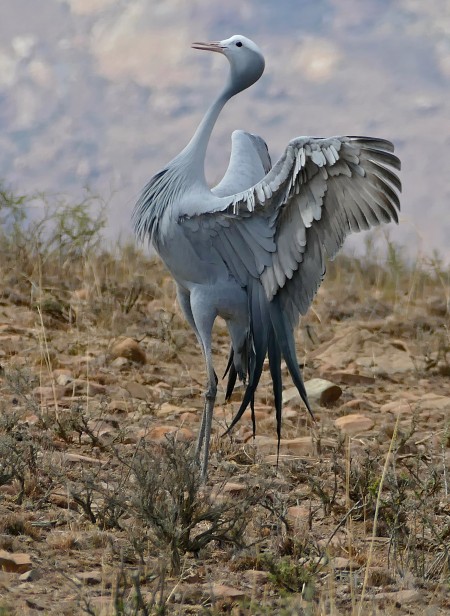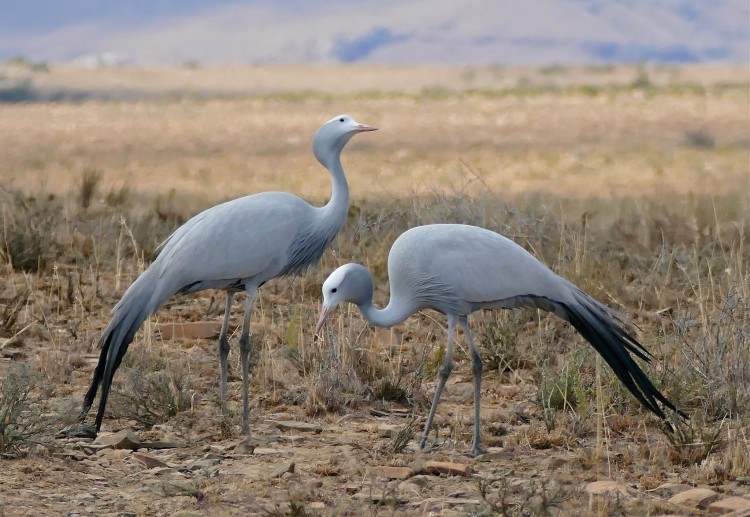South Africa's National Bird: The Elegant and Endangered Blue Crane

The Blue Crane, with its enchanting grace and striking presence, holds the esteemed title of the national bird of South Africa. This elegant avian animal (Anthropoides paradiseus) is not just a symbol of the nation's fragile, rich biodiversity, but also an emblem deeply woven into the cultural fabric and heritage of South Africa. The choice of the Blue Crane as the national bird reflects the country's commitment to conservation and the importance of preserving its natural wonders for future generations.
Endemic to the southern regions of Africa, today the Blue Crane can be found almost exclusively in parts of South Africa, with a small, isolated population living in Namibia.

Blue Crane by Bernard DUPONT
(CC BY-SA 2.0 DEED)
Though small for a crane, the Blue Crane is a large bird, standing about four feet tall, with a wingspan that can reach up to seven feet. It is easily recognizable by its pale blue-gray plumage, elongated neck, extended head feathering that gives them the appearance of having a large, uniquely shaped head, and the strikingly long feathers that droop from its wings, creating an effect of having a long tail. These wing feathers, or tertials, flutter captivatingly in the breeze.
These graceful birds exude an air of nobility and grace, whether observed feeding and loafing in their natural grassland habitats or while performing their intricate mating dances, flapping their tail-like wing feathers as they move.
Historically, the Blue Crane has been a symbol of importance among various South African cultures. For the Xhosa people, the bird is a symbol of bravery, and warriors were often awarded feathers to signify their strength and valor in battle. These feathers, worn as part of traditional regalia, are highly prized and considered sacred, showing the deep cultural respect and reverence held for this majestic bird.
However, the Blue Crane faces significant threats that have put its population at risk. Habitat loss, primarily due to agricultural expansion and urban development, has led to a drastic reduction in their natural grassland habitats. Additionally, poisoning, both intentional and accidental, along with collisions with power lines, has further exacerbated the decline in their numbers. Today, the Blue Crane is classified as Vulnerable by the International Union for Conservation of Nature (IUCN), highlighting the urgent need for concerted conservation efforts to ensure its survival.

Blue Crane by Bernard DUPONT (CC BY-SA 2.0 DEED)
Conservation initiatives across South Africa have been mobilized to protect the Blue Crane and its habitat. Elevating the bird to national symbol status has helped with these efforts.
Conservation work to help Blue Cranes include the establishment of protected areas, the implementation of captive breeding programs, and environmental education campaigns aimed at raising awareness about the bird's plight. Farmers and local communities are also being engaged to adopt bird-friendly practices, such as marking power lines to prevent collisions and reducing the use of harmful pesticides.
The designation of the Blue Crane as South Africa's national bird serves not only as a symbol of the country's natural beauty but also as a constant reminder of the fragile connection between humans and nature. It underscores the responsibility of each citizen to protect and preserve their natural heritage, not just for the aesthetic and cultural value it provides but for the ecological balance it maintains.
Moreover, the Blue Crane's status as the national bird has significant implications for tourism, drawing bird watchers and nature enthusiasts from around the globe to South Africa's diverse landscapes in hopes of catching a glimpse of this rare and beautiful species. During our fall 2023 trip to South Africa, we were extremely excited to be able to see flocks of Blue Cranes in the wild.
For South Africa, the Blue Crane is more than just a bird; it is a national treasure that encapsulates the spirit, beauty, and ecological diversity of a unique country. Its selection as the national bird honors the country's rich cultural heritage and its commitment to conserving natural resources. As efforts continue to protect and preserve the Blue Crane, it stands as a beacon of hope and a symbol of the resilience of nature, inspiring future generations to cherish and safeguard the natural world around them.

















Comments
Leave a comment
Thank you!